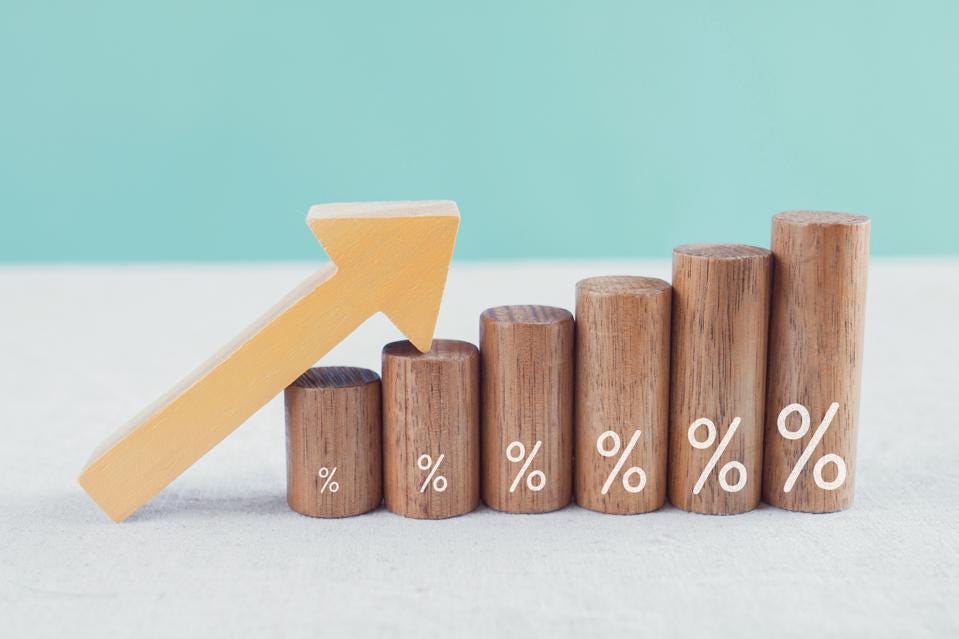
It’s March 2022, and by now you’ve probably heard that interest rates have been bumped by 0.25%.
It will likely be the first of a few interest rate increases. This is one of the solutions the government has to slow down inflation.
Many of our clients have asked us what this means when it comes to monthly payments, so here we go!
For a million dollar mortgage, here are your monthly payments using a 25-year amortization:
$4,046/month at a 1.6% variable rate
$4,600/month at a 2.74% fixed rate
If rates were to rise 0.25%, here are the new monthly payments:
$4,166/month at a 1.85% variable rate
$4,727/month at a 2.74% fixed rate
So the payments went from $4,046 to $4,166 using a variable, and from $4,600 to $4,727 using a fixed mortgage.
That’s $120 and $127 in increased payments. For most buyers with a million dollar mortgage, this would be unlikely to sway their choice.
If you wanted to keep the same original payments of $4,046 and $4,600 with the NEW increased rates, your mortgage would no longer be $1,000,000… it would be $971,000 and $973,000 respectively.
Bringing us to the conclusion that you lose roughly 2.8% of your purchasing power when rates go up by 0.25%.
You’ll notice a pattern in the numbers here, if you’re paying close attention. We’ve been teaching this at the Buyer Class for a long time.
For every 1% rise in interest rates, house prices would have to be 10% less to keep the same monthly payment
These 0.25% increases are not life changing for most buyers. However, when you begin stacking them up, it puts pressure on buyers to buy less expensive homes.
Because the part of the equation that doesn’t change much is how much they earn per month at their job!
This is part of the reason why prices are so high in 2022… because unemployment is low, and interest rates have been low as well.
Low interest rates will almost ALWAYS bump up prices.
So it will be interesting to see how this all unfolds. When the “stress test” was first introduced a few years ago, it did the same thing from a purchasing perspective as increasing interest rates by close to 2%.
We thought it would tank the market, but it didn’t.
Buyers kept buying, they just shifted their focus.
They either:
(a) Bought one category down… for example, they bought a semi-detached instead of a detached, or
(b) Moved further away to get more features for the same price.
This is why areas like Guelph, Kitchener-Waterloo, Innisfil and Bowmanville have been outperforming Toronto price increases. Buyers are driving until they can afford the homes they want.
Anyway, that’s the story with interest rates.
Your rule of thumb for quick calculations: Interest rates going up by X% will have a tenfold impact on pricing.
Interest rates rising by 0.5% increases payments and decreases affordability by AROUND 5%.
Simple, right?
Some final advice for home sellers:
Oh, and a few more notes for sellers when interest rates change:
1. A rate hike will create a temporary rush to buy. People who have existing pre-approvals will hurry to buy something before rates go up. If we see a few rate hikes this year, expect this market to be like choppy water… it won’t be smooth sailing.
2. Buyers likely won’t stop buying, but they change what they buy. If buyers lose purchasing power, they’ll still buy… but they’ll buy a different product. Townhouse shoppers will shift to condos, and detached buyers will buy semi-detached.
They may also choose to venture further away, which is the reason fringe markets like Kitchener-Waterloo, Bowmanville and Innisfil have been so crazy for the last few years. It should concern local Milton sellers, because our price points are so high right now.